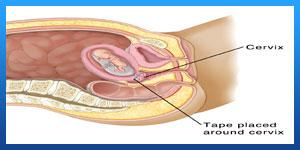What is a Cervical Biopsy?
Does the cervical biopsy pose a risk to the patient?
Care needed after cervical biopsy
Is a cervical biopsy painful?
How long does it take for your cervix to heal after a biopsy?
What are the side effects of a cervical biopsy?
Do they put you to sleep for a cervical biopsy?
How long does it take to heal from a cervical biopsy?
What is a Cervical Biopsy?
Cervical biopsy is one of the diagnostic methods. Cervical biopsy is usually performed after the colonoscopy for the patient. If a person has problems with colposcopy, biopsy will be performed for further examination.
Colposcopy is performed to check the patient's vagina and cervix, but this test is also prescribed if the patient has a Pap smear. The most commonly seen results of Pap smear tests are due to viral infections in the individual.
Uterine biopsy can be a diagnostic tool to check for cancer of the cervical cells, especially cells that do not have sufficient powers for colposcopy.

Why you need cervical biopsy
- The cause of genital pain or problems such as genital warts
- If there is a problem with Pap smear, a cervical biopsy is performed.
- If there is a risk of papilloma in the test results.
Read more about: Cervical cancer symptoms
Read more about: Cervical cancer causes
Before Cervical biopsy procedure
Schedule your cervical biopsy for the week after your period. This will make it easier for your doctor to get a clean sample. You should also make sure to discuss any medication you take with your doctor.
You may be asked to stop taking medications that could increase your risk of bleeding, such as:
aspirin
ibuprofen
naproxen
warfarin
Avoid using tampons, douches, or medicated vaginal creams for at least 24 hours before your biopsy. You should also avoid having sexual intercourse during this time.
If you’re undergoing a cone biopsy or another type of cervical biopsy that requires a general anesthetic, you’ll need to stop eating at least eight hours before the procedure.
On the day of your appointment, your doctor might suggest you take acetaminophen (such as Tylenol) or another pain reliever before you come to their office. You may experience some light bleeding after the procedure, so you should pack some feminine pads. It’s also a good idea to bring a family member or friend along so they can to drive you home, especially if you’re given general anesthesia. General anesthesia may make you drowsy after the procedure, so you shouldn’t drive until the effects have worn off.
Read more about: Stages of Cervical Cancer
Read more about: Tests for Cervical Cancer
During Cervical biopsy procedure
You may have a cervical biopsy in a healthcare provider’s office, as an outpatient, or during a hospital stay. Some biopsy procedures only need local anesthesia. Other need regional or general anesthesia. The way the test is done may vary depending on your condition and your healthcare provider's practices.
Generally, a cervical biopsy follows this process:
- You will need to undress completely or from the waist down and put on a hospital gown.
- You will be told to empty your bladder before the procedure.
- You will lie on an exam table, with your feet and legs supported as for a pelvic exam.
- Your healthcare provider will put an instrument called a speculum into your vagina. This will spread the walls of the vagina apart to reach the cervix.
- Often the healthcare provider will use a colposcope. This is an instrument with a special lens like a microscope to help see the cervical tissues. The provider will put colposcope at the opening of your vagina. It will not enter your vagina.
- Your healthcare provider will look through the colposcope to find any problem areas on the cervix or in the vagina.
- He or she may clean and soak the cervix with a vinegar solution (acetic acid solution). This solution helps make the abnormal tissues turn white so they are easier to see. You may feel a mild burning sensation. An iodine solution may be used to coat the cervix. This is called the Schiller test.
- The type of biopsy done will depend on the size and shape of the abnormal cells, as well as where they are.
- The healthcare provider may numb the area using a small needle to inject medicine.
- He or she may use forceps (tenaculum) to hold the cervix steady for the biopsy. You may feel some cramping when the tenaculum is put in place.
- The amount of tissue removed and where it is removed depend on the type of biopsy. For a simple cervical biopsy, one or more small samples of tissue will be removed using a special type of forceps. When this is done, you may feel a slight pinch or cramp. Cells from the inside of the cervical canal may be removed with a special tool called an endocervical curette or an endocervical brush. This may also cause some cramping.
- For a cone biopsy, the provider may use a loop electrosurgical excision procedure (LEEP) or the cold knife cone biopsy procedure. With the cold knife cone biopsy, a laser or a surgical scalpel may be used to remove tissue. This procedure needs regional or general anesthesia.
- Bleeding from the biopsy site may be treated with a paste-like topical medicine. The provider may also use a probe (electrocauterization) or stitches (sutures) to stop the bleeding.
- After a cone biopsy, the provider may pack the cervix with a pressure dressing. Your provider will tell you how to remove this packing.
- The provider will send the tissue to a lab for testing.
Read more about: cervical cerclage types
Read more about: Cervical Cerclage surgery in Iran
After Cervical biopsy procedure
Punch biopsies are outpatient procedures, which means you can go home right after the surgery. Other procedures may require you to remain in the hospital overnight.
Expect some mild cramping and spotting as you recover from your cervical biopsy. You may experience cramping and bleeding for as long as a week. Depending on the type of biopsy you’ve undergone, certain activities may be restricted. Heavy lifting, sexual intercourse, and the use of tampons and douches are not allowed for several weeks after a cone biopsy. You may have to follow the same restrictions after a punch biopsy and ECC procedure, but for only one week.
Let your doctor know if you:
- feel pain
- develop a fever
- experience heavy bleeding
- have foul-smelling vaginal discharge
These symptoms can be signs of an infection.
Read more about: Cervical cerclage anesthesia
Read more about: Cervical spinal stenosis
Does the cervical biopsy pose a risk to the patient?
It should be noted that during the cervical biopsy, there is no risk to the patient and the patient may only be upset by the solutions used during the biopsy and colposcopy. And in some cases because of the use of one's cramp, it may also cause spotting within a short time.
Read more about: Breast cancer biopsy
Read more about: Core needle biopsy
Care needed after cervical biopsy
- If the patient has had a Pap smear test in the previous period and a negative case has been found, be sure to bring it with you at the time of referral.
- Use acetaminophen and ibuprofen in consultation with your doctor to reduce cramp pain.
- If you see a brown discharge after a uterine biopsy, don't worry about it is normal within 2-3 days.
- You can use painkillers if you have pain after a biopsy.
- It is best not to have sex within the first 2 hours after a uterine biopsy to avoid bleeding and spotting.
Is a cervical biopsy painful?
A cervical biopsy will cause mild discomfort but is usually not painful; you may feel some pressure or cramping. A biopsy of the lower portion of the vagina or the vulva can cause pain, so your doctor may administer a local anesthetic to numb the area.
How long does it take for your cervix to heal after a biopsy?
It usually takes about 4 to 6 weeks for your cervix to heal after this procedure.In the first 24 hours after your procedure:
- Drink 8 to 12 (8-ounce) glasses of liquids.
- Eat well-balanced, healthy meals.
The first 4 days after your procedure, you may have vaginal discharge that looks like menstrual bleeding. The amount varies for everyone.
- Over the next 2 to 3 weeks after your procedure, your vaginal discharge will become clear and watery and then will stop.
- Use sanitary pads for vaginal discharge.
For 4 to 6 weeks after your procedure or until your doctor tells you your cervix is healed:
- Don’t put anything inside your vagina (such as tampons and douches) or have vaginal intercourse.
- Take showers instead of baths. Don’t soak in water (such as swimming pools, hot tubs, or baths).
- Don’t do any heavy housework (such as vacuuming, yard work, or carrying groceries or laundry).
- Don’t lift objects over 10 pounds (4.5 kilograms).
- Don’t do any strenuous exercise (such as running and aerobics).
Your next period may be late, or you may have a heavier blood flow than usual.
Call your doctor’s office to schedule a follow-up visit. This should be about 4 weeks after your procedure.
Read more about: Breast needle biopsy
Read more about: Prostate biopsy recovery
What are the side effects of a cervical biopsy?
The risks following a colposcopy and biopsy are minimal, but rare complications include:
- bleeding that is very heavy or lasts longer than two weeks
- fever or chills
- infection, such as heavy, yellow-colored, or bad-smelling discharge from your vagina
- pelvic pain
If you experience any of these symptoms, call your doctor immediately.
A colposcopy and biopsy won’t make it more difficult for you to become pregnant.
Do they put you to sleep for a cervical biopsy?
In cone biopsy you'll be given a general anesthetic that will put you to sleep.
Read more about: Cervical cerclage removal
Read more about: Cervical fracture dislocation
How long does it take to heal from a cervical biopsy?
It usually takes about 4 to 6 weeks for your cervix to heal after this procedure.
In the first 24 hours after your procedure:
- Drink 8 to 12 (8-ounce) glasses of liquids.
- Eat well-balanced, healthy meals.
The first 4 days after your procedure, you may have vaginal discharge that looks like menstrual bleeding. The amount varies for everyone.
- Over the next 2 to 3 weeks after your procedure, your vaginal discharge will become clear and watery and then will stop.
- Use sanitary pads for vaginal discharge.
For 4 to 6 weeks after your procedure or until your doctor tells you your cervix is healed:
- Don’t put anything inside your vagina (such as tampons and douches) or have vaginal intercourse.
- Take showers instead of baths. Don’t soak in water (such as swimming pools, hot tubs, or baths).
- Don’t do any heavy housework (such as vacuuming, yard work, or carrying groceries or laundry).
- Don’t lift objects over 10 pounds (4.5 kilograms).
- Don’t do any strenuous exercise (such as running and aerobics).
Your next period may be late, or you may have a heavier blood flow than usual.
Read more about: Cervical Fracture Types
Read more about: Risk factors for cervical cancer
Read more about: Cervical cancer staging and treatment


